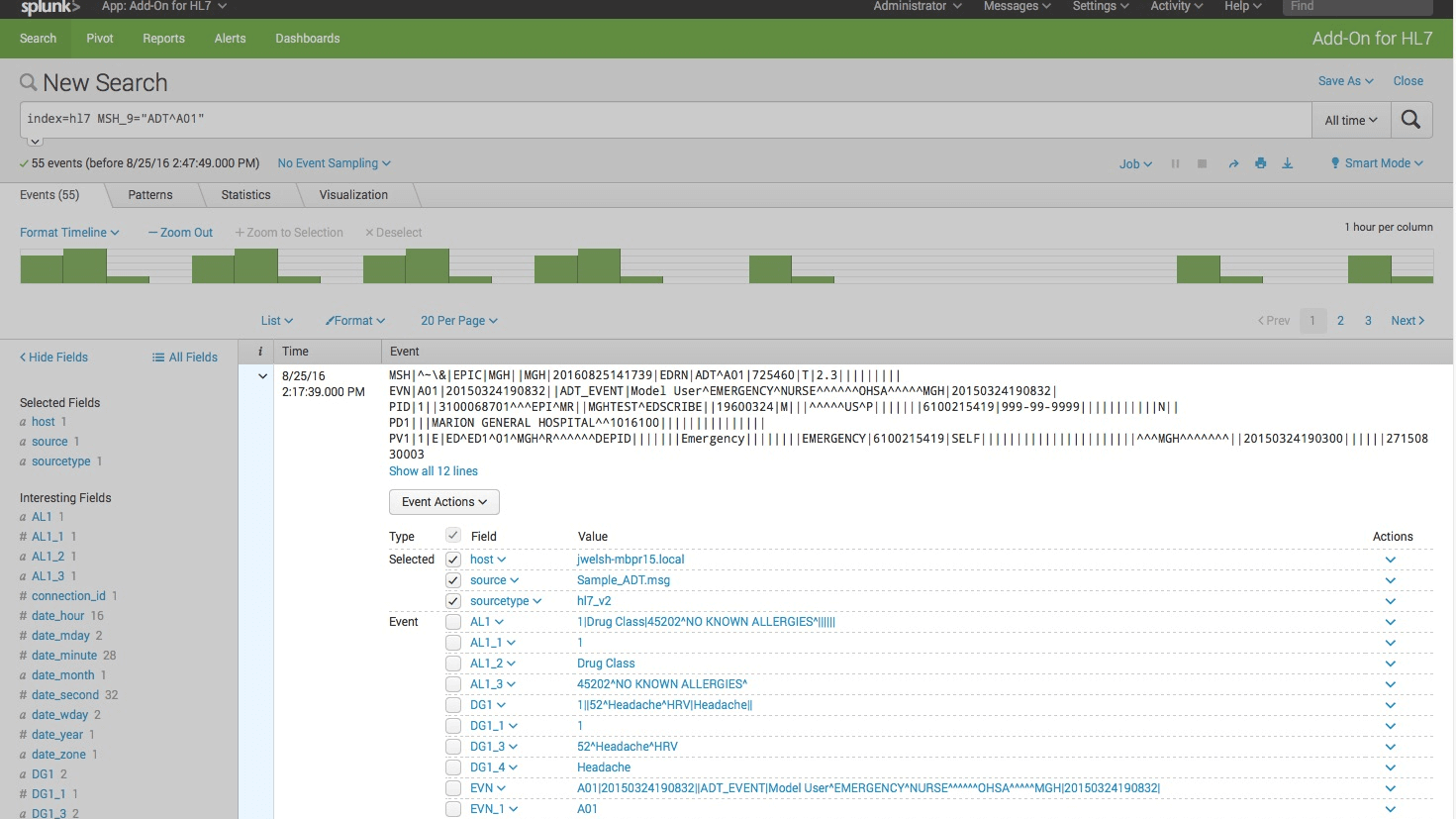Parsing HL7 with Splunk
At my job I do a fair amount of work with HL7. If you work in the medical field you probably know that HL7 is the language that medical systems use to talk with each other. It’s a fairly simple format that uses carriage returns and pipes to delimit fields … ok there are a few other delimiters as well, but the carriage returns and pipes are the big ones. Below is an example HL7 message.
MSH|^~\&|MegaReg|XYZHospC|SuperOE|XYZImgCtr|20060529090131-0500||ADT^A08|01052901|P|2.3 EVN||200605290901||||200605290900 PID|||56782445^^^UAReg^PI||KLEINSAMPLE^BARRY^Q^JR||19620910|M||2028-9^^HL70005^RA99113^^XYZ|260 GOODWIN CREST DRIVE^^BIRMINGHAM^AL^35209^^M~NICKELL’S PICKLES^10000 W 100TH AVE^BIRMINGHAM^AL^35200^^O|||||||0105I30001^^^99DEF^AN PV1||I|W^389^1^UABH^^^^3||||12345^MORGAN^REX^J^^^MD^0010^UAMC^L||67890^GRAINGER^LUCY^X^^^MD^0010^UAMC^L|MED|||||A0||13579^POTTER^SHERMAN^T^^^MD^0010^UAMC^L|||||||||||||||||||||||||||200605290900 OBX|1|NM|^Body Height||1.80|m^Meter^ISO+|||||F OBX|2|NM|^Body Weight||79|kg^Kilogram^ISO+|||||F AL1|1||^ASPIRIN DG1|1||786.50^CHEST PAIN, UNSPECIFIED^I9|||A
Each line in the message is called a segment and each segment can be divided into fields based on the pipes. For instance the third line is the PID segment which has patient information such as the MRN (PID 3), patient name (PID 5), birth date (PID 7), etc. The PV1 segment has information that relates to the patient visit. It is a fairly concise format without much overhead and as such is perfect for medical institutions where these kinds of messages are flowing constantly throughout the day.
The Problem
In a typical medical environment there will be a system called the HL7 routing engine that serves as an intermediary between all the various medical systems in the clinic or hospital. The HL7 engine can route messages to one or various systems and transforms them en-route based on rules. Most HL7 engines have the ability to log the messages sent through them in some format.
Often times there may be a need to lookup what messages were sent to various system to troubleshoot problems. In many cases there is no great means of searching through the thousands or even hundreds of thousands of messages sent each day to troubleshoot these issues.
The Solution
About a year ago I was approached by some folks from Splunk about creating a Technical Add-on (TA) for Splunk for parsing HL7. After many months of working with one of their engineers named Joe Welsh we were able to release the free ‘HL7 Add-On for Splunk“. We tested the add-on by throwing millions of our HL7 messages at it to make sure it parsed the messages correctly.
With this TA we can have Splunk monitor our HL7 logs and in real-time are able to quickly search those logs to troubleshoot issues, report on failed messages, and view dashboards to monitor the health of our HL7 environment. I have been super pleased with the results.
If you are a medical institution that uses Splunk check out the add-on … it’s free. See what awesome things you can do with Splunk and HL7. Let me know in the comments if you have found it useful.
Splunkbase Link
https://splunkbase.splunk.com/app/3283/
